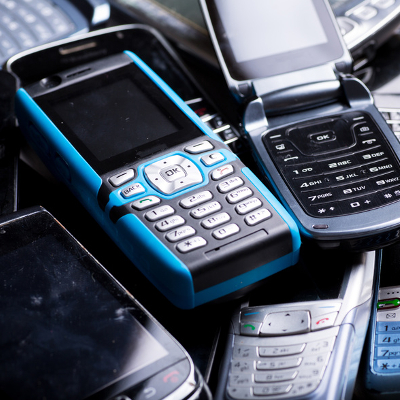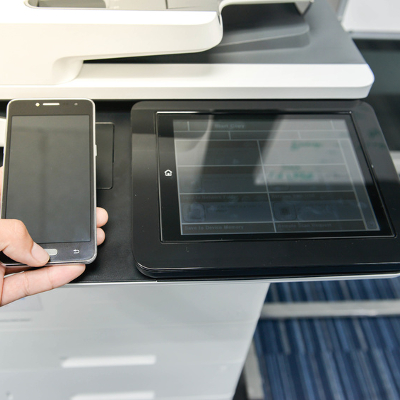Is Your Mobile Device Safe from Malware?

Mobile devices are becoming more important in business use, which means that their security needs to be a serious consideration. While for most of its history, the telephone’s function was limited to sending sound, the new functions that these new mobile devices have give them more utility, but also make them more of a target for threats, including viruses.
Protecting a mobile device against viruses will require the installation of a mobile antivirus solution. This is despite the presence of Play Protect, an internal safeguard that Google has developed to stop malicious applications and updates. Play Protect scans everything in the Play Store, both when it is first added and whenever it is installed on a device, as it works to protect against malware and other threats that target mobile devices. Unfortunately, as security goes, Play Protect isn’t very effective.
On average, real-time malware detection rates hover at 94.8 percent. After four weeks, these rates rise to 96.9 percent. Play Protect’s rates are at 48.5 percent real-time and 66.3 percent after four weeks.
Installing an additional antivirus application can better protect your device. Even better, many of the applications with an above-average detection rate are available for free. By delivering the services of a comprehensive mobile security suite, many of these solutions are very similar to Google Play Protect’s intended purpose. However, some of these apps do have some downsides.
Some antivirus applications, for example Avast Mobile Security and McAfee Mobile Security, rely on ads for support. This may turn some users off. Norton Security Antivirus allows remote locking capabilities, but doesn’t block malicious websites.
Modern business requires a mobile device management strategy that keeps you secure against threats and issues of all kinds. Catalyst Technology Group can help you to identify and implement the security solutions you need, including the ones for your mobile devices. Call (317) 705-0333 for more information.
Tip of the Week: Protecting Your Mobile Device in 2 Easy Steps

Mobile devices are one of the greatest tools available for business use today. However, because society has come to rely so much on mobile devices, these devices have become a treasure trove for cybercriminals to obtain information from. For this week’s tip, we’ll go over some simple ways to protect yourself from such threats.
Do You Really Need to Connect?
Wi-Fi and Bluetooth connectivity give our phones a heightened level of utility, but this benefit can also come with severe risks. Mobile devices, for the sake of simplicity and convenience, are ready and willing to connect with any Wi-Fi or Bluetooth signal they can. Unfortunately, this puts them at risk of being hijacked by any threat that may be lurking on the signal.
To mitigate this risk, make sure that you aren’t connecting to Wi-Fi or Bluetooth signals that aren’t secure and trustworthy. In fact, when not using them, keep these connections disabled just in case.
The same goes for public charging stations. These can also be used to spread threats, so it is better to rely on a portable charger or a wall outlet to power your device.
Furthermore, if you are connecting to something, make sure you aren’t sharing more than you need. For instance, if you need to rent a car while on a business trip, there’s nothing wrong with using Bluetooth to make hands-free calls. However, if prompted, there is no reason to sync your contacts with the car’s storage, effectively handing them to the next person that rents that car. Being cautious as you connect will only help you to stay safe in the long run.
Keep it Locked Up
The contents of your phone shouldn’t be available to just anyone who picks it up. Whether you have access to sensitive business information through the device, or you have apps that help you manage the rest of your life, your information is at risk unless you have protections in place to keep it safe.
The simplest way to do so is to leverage the phone’s built-in security features. Whether your phone accepts PIN numbers, passcodes, or a pattern set it up so that only you know how to open it. Furthermore, with more devices today leveraging biometric and facial recognition technology, there are other means for you to secure your mobile device.
Security is a crucial consideration to keep in mind, whenever you’re using a mobile device. For more information on how you can keep your business resources safe from threats in and out of the office, reach out to Catalyst Technology Group at (317) 705-0333.
Tip of the Week: Don’t Let Your Old Android Device go to Waste

Unless you’re the trade-in or hand-me-down kind of person, it’s likely that you have a supply of old Android devices squirrelled away somewhere. You know, just in case the one who have now breaks. However, these old devices can be useful in other ways around the office. For this week’s tip, we’ll go over three alternate uses for your mobile device in the office.
Portable Trackpad
There are assorted applications available that allow you to link your old phone to your computer and use it as an alternative controller to your mouse. These apps often offer specialized features that give you better control over media playback and other useful workplace utilities.
Just be sure to install whatever app you select from the Google Play store, as it is the safest option out there for downloading apps. However, you should also make sure that your IT department signs off on you adding these apps to devices used for work.
Universal Remote
If you happen to use smart devices in your office, your old phone could become a central control hub for them. Download the necessary apps from the Google Play store, and in no time, you’ll be able to control any of the gadgets you have installed around your office with a dedicated remote, eliminating the need for the bulky included remotes that accompany many of these devices, as well as the need to take up space on your current mobile phone.
Security Camera
Similarly to using your old device as a universal remote, you can find apps on Google Play that can turn it into a security camera with a few different features. By doing so, you can boost your office’s security with the option to check in on goings-on via a web browser, record the footage, and even have the camera activate when motion is detected.
Bonus Purpose: Donate the Phone to BOINC
The Berkeley Open Infrastructure for Network Computing, or BOINC, allows you to donate the computing resources of your old phone to assist research teams in their efforts towards scientific breakthroughs. So far, resources dedicated to BOINC have powered research into the climate, molecular dynamics, genetic sequencing, measured the efficacy of malaria treatments and the power of earthquakes, as well as many other scientific causes.
To participate, all you have to do is download the BOINC app from the Google Play Store and select what research you want to commit your phone’s resources to. The app will only run if your device is both charged and plugged in, as so not to leave you with a drained phone, and can be set to only transmit data over Wi-Fi, saving your data.
What other uses have you come up with for your old Android devices? Let us know in the comments, and make sure to subscribe to our blog!
Tip of the Week: How to Print Directly From Your Android Device

Have you ever tried to print something from your smartphone? Yes, we know that sounds kind of absurd–but it’s certainly not impossible. In fact, it’s often easier to do this than sending yourself an email with the attachment, or accessing the files on your desktop. We’ll go over how you can print a document or picture from your Android smartphone so that you can make things just a little bit simpler.
First, take a moment to think about how often you use your smartphone to access important documents via a cloud connection. Why waste time to print something out when you can accomplish largely the same feat just by connecting your device to your printer via Google’s Cloud Print?
First, you’ll want to check to see if your printer is Cloud Ready. You can use this web page to search for the product number to find out if it is or not. If it’s Cloud Ready, you can then access the wireless setup for your device in your printer’s software, which should be available on a connected desktop. Just make sure that it’s connected to your wireless network.
Depending on the brand and manufacturer of your printer, you may need to visit their website for instructions on how to set it up for Google Cloud Print. Otherwise, you should see your device in your web browser by typing chrome://devices into the search bar. If your device appears under New Devices, click on Manage. You’ll then be able to Register it. When you return to chrome://devices, you’ll see your printer located in the My Devices section, and you’ll be able to select it as a Print destination.
This next step involves downloading the Cloud Print app on your smartphone, which acts as an add-on to services like Google Docs, Gallery, and other apps on your phone. Once you’ve downloaded it, just navigate through Settings > Printing > Cloud Print.
The next time you find yourself in need of a quick print job, just check the settings of the app you’re working in. It will generally be accessed through the three-dot menu in the top-right corner. One of the options should display Print or Cloud Print. Afterwards, it’s only a matter of choosing which device you want to use.
Does your business need a hand with printing documents and other mobile-related issues? Reach out to Catalyst Technology Group at (317) 705-0333.

